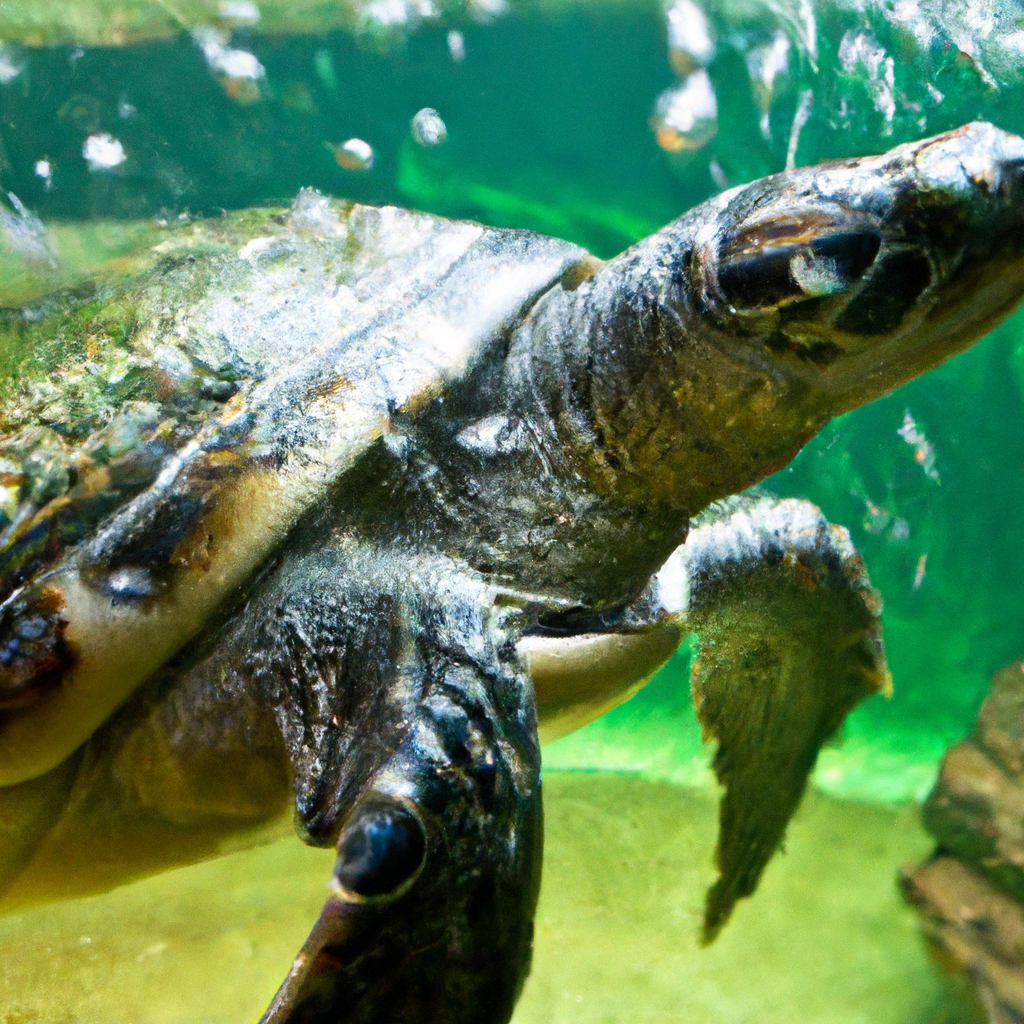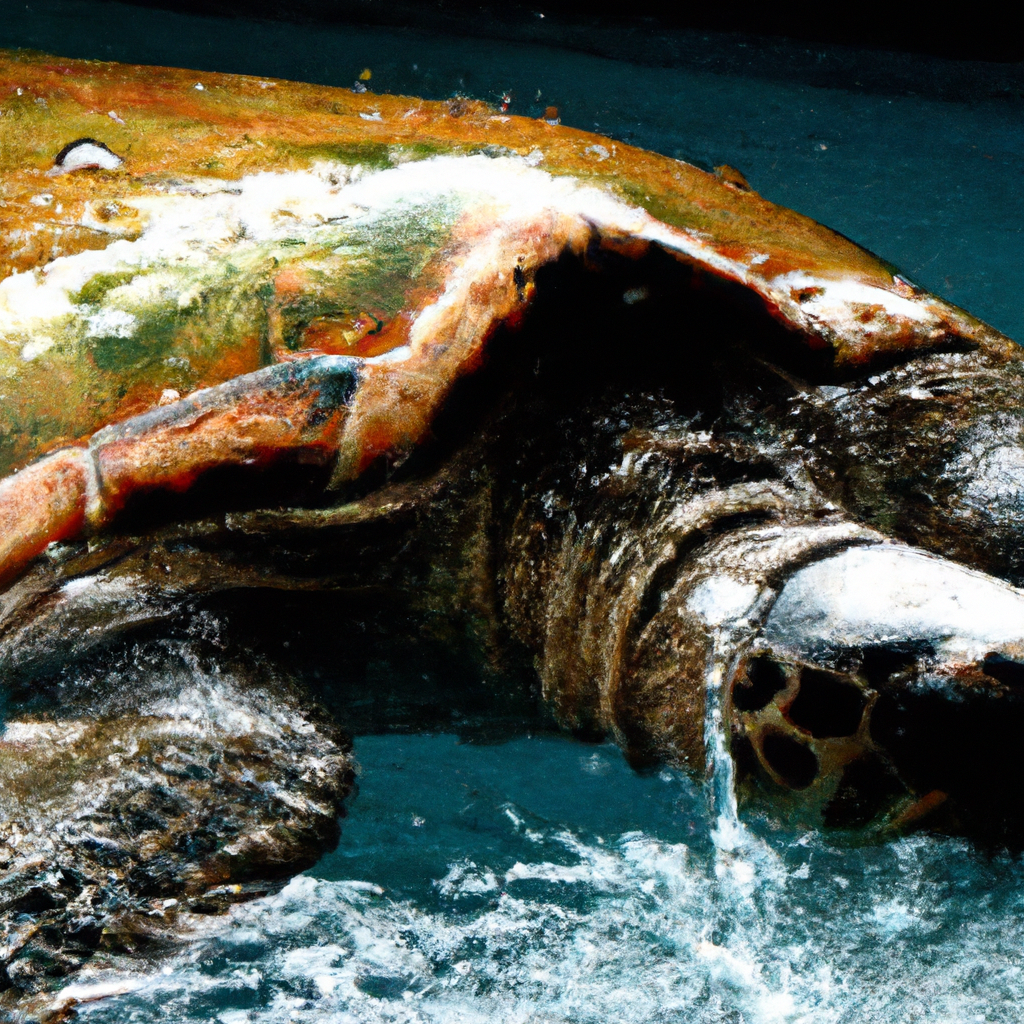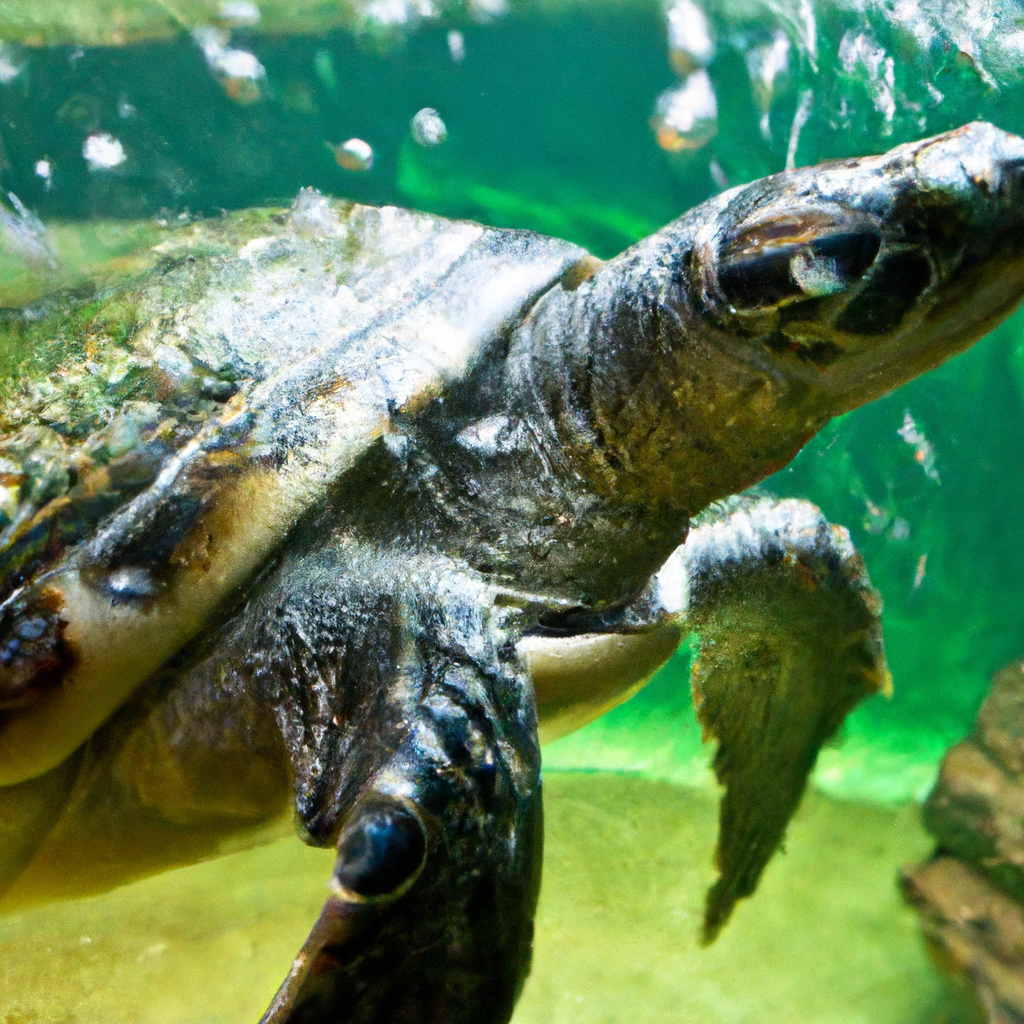You probably already know that water is essential for all living creatures, and turtles are no exception. But have you ever wondered just how important hydration is for these shelled reptiles? In this article, we will explore the critical role that water plays in the lives of turtles and the different ways they obtain and utilize it. From their reliance on both external and internal water sources to the act of soaking, we will uncover why proper hydration is crucial for the health and well-being of turtles. So, let’s dive into the fascinating world of turtle hydration and discover why water is so vital for these unique creatures.
Why hydration is important for turtles
Maintaining physiological functions
Hydration plays a crucial role in maintaining the physiological functions of turtles. Just like any other living organism, turtles rely on water to support various bodily processes such as respiration, circulation, and digestion. Water is essential for the proper functioning of their organs and tissues, ensuring that they can thrive and live a healthy life.
Preventing dehydration
One of the primary reasons why hydration is important for turtles is to prevent dehydration. Dehydration occurs when the body loses more water than it takes in, leading to an imbalance in fluid levels. For turtles, dehydration can have severe consequences, causing them to become ill or even die. Without adequate hydration, their bodies can’t function properly, and they are unable to maintain the delicate balance of fluids within their system.
Facilitating digestion
Proper hydration is vital for facilitating digestion in turtles. Water helps break down food, allowing turtles to extract essential nutrients and energy from their meals. Without enough water, turtles may experience difficulties in digesting their food properly, leading to issues like constipation or malnutrition. By staying well-hydrated, turtles can ensure that their digestion process runs smoothly, promoting overall digestive health.
Regulating body temperature
Turtles are ectothermic creatures, meaning they rely on external sources of heat to regulate their body temperature. Water plays a crucial role in this temperature regulation process. By submerging themselves in water, turtles can cool down and prevent overheating on hot days. Likewise, they can warm up by basking in the sun or under a heat lamp. Maintaining the optimal body temperature is essential for turtles’ overall well-being and allows them to carry out their daily activities without being hindered by extreme temperature fluctuations.
Water sources for turtles
Natural water bodies
In their natural habitats, turtles have access to various water bodies such as ponds, lakes, rivers, or even ocean coastlines. These natural water sources provide them with the necessary hydration and mimic their natural environment. If you have a turtle that you keep in an outdoor enclosure or pond, ensuring a clean and accessible water body is crucial for their well-being.
Indoor enclosures
For turtles kept in indoor enclosures, replicating natural water bodies can be challenging. However, providing a water source within the enclosure is still crucial for their hydration. This can be in the form of a large water tank or enclosure that allows turtles to swim and soak as they would in the wild. Indoor enclosures should be carefully designed to mimic the conditions of their natural habitat as closely as possible.
Water bowls and containers
Water bowls and containers are an essential component of providing hydration for turtles. These can be smaller containers placed within the turtle’s enclosure, allowing them to drink and soak whenever they need to. The water in these bowls or containers should be clean and replaced regularly to ensure optimal hygiene and prevent the growth of harmful bacteria or algae.
Misting and spraying
In addition to providing a larger water source, misting or spraying water within the turtle’s enclosure can help maintain humidity levels and provide additional hydration. Misting or spraying should be done gently and in a way that mimics natural rain or water droplets. This can be achieved using a spray bottle or a misting system that releases fine water droplets into the enclosure.

Characteristics of suitable water sources
Clean and uncontaminated
Regardless of the water source, it is crucial for turtles to have access to clean and uncontaminated water. This means regularly monitoring water quality, removing any debris or waste, and ensuring that harmful substances such as chlorine or heavy metals are absent. Using water treatments or filters can help remove impurities and maintain the cleanliness of the water.
Temperature requirements
Water temperature is essential for turtles, as they have specific temperature requirements for their well-being. The water should be within the appropriate temperature range for the turtle species, typically between 75-85 degrees Fahrenheit (24-29 degrees Celsius). Maintaining the correct water temperature ensures that turtles are comfortable and can engage in their natural behaviors without being stressed or compromised.
Adequate water depth
Turtles require water with adequate depth to fully submerge themselves and swim freely. The water depth should be deep enough for the turtle’s entire body to be submerged, allowing them to engage in natural behaviors like diving and swimming. Providing an adequate water depth ensures that turtles can access the necessary hydration and carry out their aquatic activities.
Accessibility and escape routes
Water sources for turtles should be easily accessible and provide escape routes for their safety. Turtles should be able to enter and exit the water easily without any obstructions or barriers. Additionally, providing ramps or basking areas within the water source allows turtles to bask and rest without the risk of drowning. Creating an environment that accommodates turtles’ natural behaviors promotes their overall well-being and reduces the chance of accidents or injuries.
Common mistakes in providing water sources
Insufficient water depth
One common mistake in providing water sources for turtles is not providing enough water depth. Turtles need enough water to fully submerge themselves and move around freely. Inadequate water depth can cause stress and discomfort for turtles, limiting their ability to engage in their natural behaviors and potentially leading to health issues related to dehydration.
Unclean water conditions
Another common mistake is failing to maintain clean water conditions. Turtles are susceptible to diseases and infections if their water is contaminated or dirty. Neglecting water quality can lead to a buildup of harmful bacteria or parasites, compromising the health of turtles. Regular cleaning and monitoring of the water source are essential to ensure a safe and hygienic environment.
Inaccessible water sources
Turtles should have easy access to their water sources at all times. Placing the water container or bowl too high or in an area that is difficult for the turtle to reach can result in inadequate hydration. It is essential to ensure that the water source is easily accessible for the turtle, regardless of their size or age.
Inadequate temperature regulation
Maintaining the correct water temperature is crucial for turtles’ overall health and well-being. Providing water that is too cold or too hot can disrupt their biological functions and stress their bodies. It is essential to monitor and regulate the water temperature to ensure that it falls within the appropriate range for the specific turtle species.

The importance of soaking for turtles
Maintaining skin hydration
Soaking plays a vital role in maintaining the skin hydration of turtles. Turtles have permeable skin that allows them to absorb water and exchange gases with their environment. By regularly soaking in water, turtles can replenish the moisture in their skin, preventing dryness and maintaining optimal skin health.
Aiding shedding of scutes
Turtles have an outer layer of scales called scutes, which they shed periodically as they grow. Soaking in water helps soften the old scutes, making it easier for turtles to shed them and reveal the new, healthy layers underneath. Without proper soaking, turtles may experience difficulties in shedding, leading to retention of old scutes and potential skin issues.
Assisting with hydration and drinking
Soaking is an effective way for turtles to hydrate themselves and replenish their water intake. Turtles can absorb water through their skin and also drink by submerging their heads or mouths in the water. Soaking provides an opportunity for turtles to drink and rehydrate, ensuring that they have a sufficient water supply to support their bodily functions.
Promoting exercise and natural behavior
Soaking also promotes exercise and natural behavior in turtles. Turtles are naturally aquatic creatures and spending time in the water allows them to engage in activities like swimming and diving. Soaking provides a low-impact form of exercise for turtles, keeping them active and allowing them to express their natural behaviors in a captive environment.
How to provide a suitable soaking area
Choosing the right container
When providing a soaking area for turtles, it is important to choose the right container. The container should be large enough to accommodate the turtle comfortably and allow them to fully submerge themselves. It should be made of non-toxic materials and have smooth edges to prevent any harm or injury to the turtle. Avoid using containers with steep sides or slippery surfaces that the turtle may have difficulty navigating.
Determining water temperature
The water temperature in the soaking area should be within the appropriate range for the turtle species. Use a water thermometer to monitor and adjust the temperature as needed. As a general rule, the water should be comfortably warm to the touch, similar to the turtle’s natural habitat. Avoid using water that is too hot or too cold, as it can stress the turtle and disrupt their natural functions.
Monitoring soaking duration
The duration of soaking can vary depending on the turtle’s species, age, and individual needs. It is important to monitor the turtle’s behavior during soaking to determine the appropriate duration. As a general guideline, a soaking session can range from 15 minutes to an hour. However, it is essential to observe the turtle’s comfort level and end the session if they appear stressed or restless.
Proper cleaning and maintenance
Regular cleaning and maintenance of the soaking area are necessary to ensure a hygienic environment for the turtle. Remove any debris, waste, or uneaten food from the water after each soaking session. Clean the container with mild soap and water, ensuring that no residue or harmful chemicals remain. It is recommended to rinse the container thoroughly before refilling it with fresh, clean water for the next soaking session.
Frequency and duration of soaking
Species-specific variations
The frequency and duration of soaking can vary depending on the turtle’s species. Some turtle species are more aquatic and require frequent soaking, while others may not have the same level of water dependence. Research the specific needs of your turtle’s species to determine the appropriate frequency and duration of soaking sessions.
Age and health considerations
The age and health of the turtle should also be taken into account when determining the frequency and duration of soaking. Hatchlings and younger turtles may require more frequent soaking sessions to support their growth and development. Turtles with certain health conditions, such as respiratory issues or shell infections, may benefit from more frequent and longer soaking sessions to aid in their recovery.
Seasonal and environmental factors
Seasonal and environmental factors can also influence the frequency and duration of soaking. During warmer months or in drier climates, turtles may require more frequent soaking to prevent dehydration. Conversely, during colder months or in more humid environments, turtles may need less frequent soaking. Monitor the turtle’s behavior and overall health to adjust the soaking frequency and duration accordingly.
Observing turtle behavior
Ultimately, observing the turtle’s behavior and response to soaking is crucial in determining the appropriate frequency and duration. Pay attention to signs of discomfort or stress during and after soaking. If the turtle appears lethargic, refuses to eat, or shows any other signs of distress, it may be necessary to reevaluate the soaking routine and make adjustments as needed.
Signs of dehydration in turtles
Sunken eyes
One of the key signs of dehydration in turtles is sunken eyes. When a turtle is adequately hydrated, its eyes appear bright, alert, and slightly protruding. However, dehydration can cause the eyes to appear sunken or dull, indicating a lack of proper hydration.
Lack of appetite
Dehydration often leads to a decreased appetite in turtles. If your turtle has suddenly lost interest in its food or is eating significantly less than usual, it could be a sign of dehydration. Turtles need to remain hydrated to maintain a healthy appetite and obtain the necessary nutrients from their food.
Dry and flaky skin
Dehydrated turtles may exhibit dry and flaky skin. In healthy turtles, the skin should appear smooth, shiny, and well-hydrated. However, dehydration can cause the skin to become dry, rough, and develop flaky patches, indicating a lack of moisture.
Lethargy and weakness
Dehydration can also lead to lethargy and weakness in turtles. If your turtle appears sluggish, has reduced energy levels, or seems weaker than usual, it may be experiencing dehydration. Fatigue and weakness can be a result of inadequate hydration, affecting the turtle’s overall well-being and ability to carry out normal activities.
Preventing dehydration in turtles
Providing adequate water sources
The first and most important step in preventing dehydration in turtles is to provide adequate water sources. Ensure that the turtle has access to clean and uncontaminated water at all times. Whether through a larger water body, water bowls, or misting, make sure the turtle can drink and soak as needed to maintain proper hydration levels.
Regular monitoring of hydration
Regularly monitoring the turtle’s hydration is essential to catch any signs of dehydration early. Pay attention to the turtle’s behavior, appetite, and overall appearance. If you notice any signs of dehydration, such as sunken eyes or dry skin, take immediate action to provide the turtle with additional hydration.
Adjusting environmental conditions
In addition to providing water sources, adjusting the environmental conditions can help prevent dehydration in turtles. Maintain appropriate humidity levels in the turtle’s enclosure to prevent excessive moisture loss. Avoid excessively high temperatures that can lead to dehydration and provide shaded areas to protect the turtle from direct sunlight.
Consulting a veterinarian
If you suspect that your turtle is dehydrated or if you are unsure about the appropriate care and hydration requirements, it is crucial to consult a veterinarian who specializes in reptiles. A reptile veterinarian can provide guidance specific to your turtle’s species and individual needs, ensuring that you are providing the best possible hydration and care for your pet.
Conclusion
The importance of hydration for turtles cannot be overstated. Hydration is essential for maintaining their physiological functions, preventing dehydration, facilitating digestion, and regulating body temperature. Providing suitable water sources, such as natural water bodies, indoor enclosures, water bowls, and misting, is crucial for meeting turtles’ hydration needs.
Soaking plays a vital role in maintaining the health and well-being of turtles, as it helps with skin hydration, shedding of scutes, hydration and drinking, as well as promoting exercise and natural behavior. Ensuring a suitable soaking area, choosing the right container, monitoring water temperature, and practicing proper cleaning and maintenance are all crucial aspects of providing a suitable soaking area for turtles.
The frequency and duration of soaking can depend on species, age, health, seasonal factors, and individual behavior. Monitoring turtle behavior and recognizing signs of dehydration, such as sunken eyes, lack of appetite, dry skin, and lethargy, is essential in preventing dehydration.
By providing adequate water sources, regularly monitoring hydration, adjusting environmental conditions, and consulting a veterinarian when needed, turtle owners can ensure the health and well-being of their beloved pets. Proper hydration and soaking techniques are essential for keeping turtles happy and thriving in captivity.
